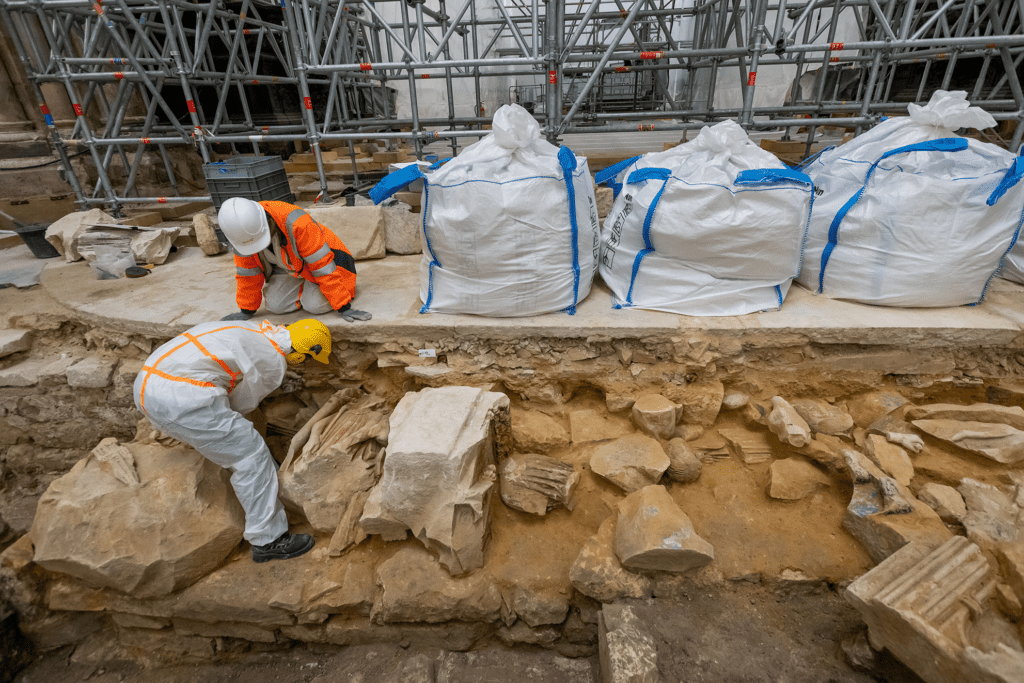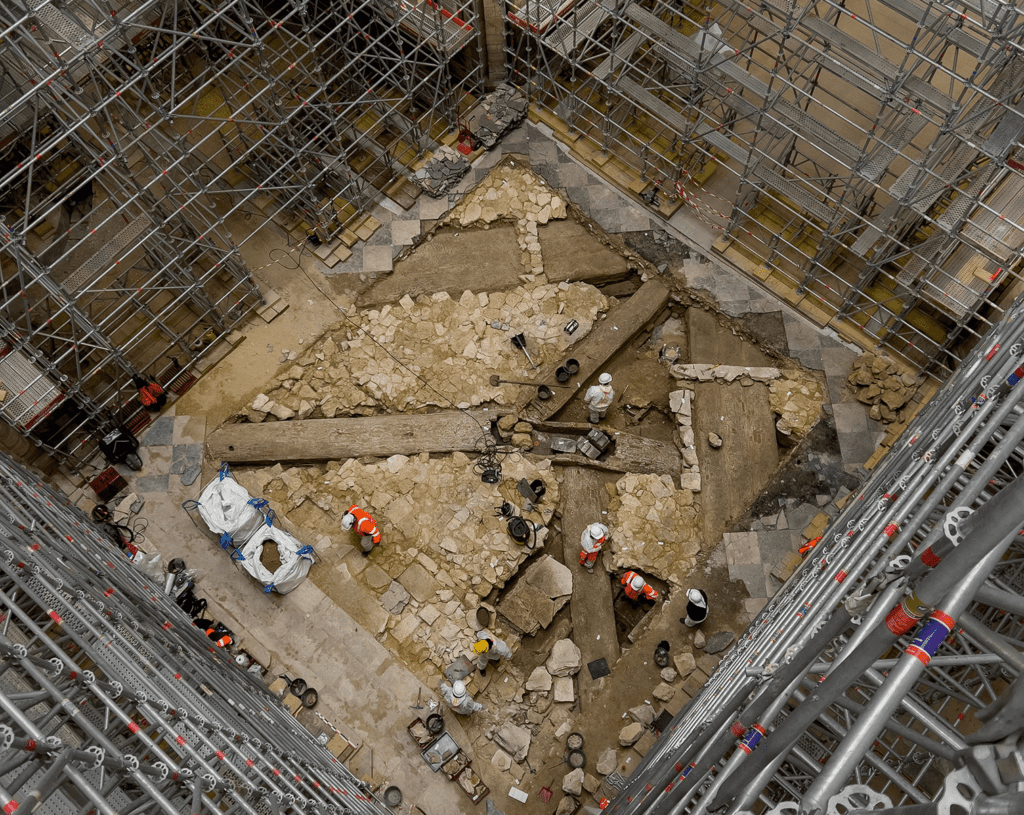In 2019, a fire broke at the Notre-Dame de Paris. Hundreds of firefighters responded, but by the time the fire had been put out, the building’s spire had collapsed and most of its roof and upper walls had been destroyed. Reconstruction and restoration work started not long afterward — a long and tedious process that officials say will be completed in 2024, but many experts fear will last twenty years or more.
But during this work, something unexpected was discovered: a human-shaped lead sarcophagus. Finding a sarcophagus inside a church is not that unusual per se, but in this case, scientists aren’t really sure who this is, and the tomb itself looks very peculiar. So they decided they’ll open it.

The sarcophagus was discovered along with a trove of 13th-century objects, including ceramics, statues, and sculptures. Scientists have also excavated furniture and other century-old objects, but the most intriguing of findings is no doubt the sarcophagus.
The finding was made as Inrap, France’s national archaeological institute, carried out a “preventive dig” in a section where support elements for the monument’s new spire will be built. From the moment the dig started, archaeologists knew they were on to something.
An archaeological emergency
Faced with the urgency of securing the site after the fire, archaeologists, engineers, and architects rushed to Notre Dame to identify, sort, and save material inside the cathedral. They used a mixture of robotic machines, climbing technicians, and photogrammetry models for this. After the situation stabilized and reconstruction plans were drawn out, several non-invasive surveys were used to map the subsurface of Notre Dame.
These surveys showed several voids, as well as “a poorly known service network” and “totally unknown remains”. So since some areas had to be rebuilt as well, archaeologists started digging up some of these elements lying beneath the surface.
Several tombs and painted sculptures emerged, along with tombs and a section of the old rood — a sort of screen built in 1230 to separate the choir from the congregation. The rood screen was torn down during the reign of Louis XIV and was rediscovered by 19th-century archaeologists. Other parts from the ornate structure are currently kept at the Louvre.

The tombs are also interesting. They’re well organized and don’t overlap — which is rare in what must have been a very popular burial site for the French elites. To date, archaeologists have discovered about four graves and ten plaster sarcophagi. Most had been badly damaged, but one of them still contained fabric embroidered with gold thread.
An unknown sarcophagus
“The vaults crashed here during the fire and opened a hole into this 19th-century heating network and underneath there is a series of layers which is very dense, interesting, and fascinating,” said French National Archeological Institute archeologist Christophe Besnier following the discovery.
But out of the many intriguing findings from the cathedral, one stands out in particular: a lead tomb, measuring 1.95 meters long and 48 cm wide (6.4 by 1.6 feet). The sarcophagus was apparently moved to a plaster vault and despite some holes, it’s in remarkably good condition overall.
The team used an endoscopic camera and found that there are some plant remains under the head of whoever was buried there (probably indicative of textiles). One thing’s for sure, this must have been an important person. Much more can’t be said from only non-invasive investigations — so archaeologists decided they’ll open it.
The sarcophagus is now in a safe location in the southern city of Toulouse, and will be opened “very soon”, archaeologists say. Since it was found near 14th-century furniture, it’s suspected that the sarcophagus also dates from the 14th century, but if this is the case, then it’s a very rare burial practice.

First, researchers will attempt to determine the gender of the person, and then, a team from the Institute of Forensic Medicine will carry out DNA analyses of the remains. However, researchers emphasize that a human body is not an archaeological object, and any analysis must be carried out respectfully. In some countries, ancient remains are considered archaeological objects, but this is not the case in France.
Efforts to rebuild the emblematic cathedral have doubled down as French President Emmanuel Macron has pledged to complete reconstruction by April 15, 2024, the fifth anniversary of the blaze, and right before Paris will set to host the Summer Olympics.
“Notre Dame is our history, our literature, part of our psyche, the place of all our great events, our epidemics, our wars, our liberations, the epicenter of our lives,” Macron told reporters the morning after the blaze. “We will rebuild it together.”
It’s laudable that French archaeologists are working not just to conserve as much as possible from the cathedral, but also to explore it in unprecedented ways. Now that the cathedral is not being used and can also be investigated invasively, this is helping scientists explore new, previously unknown elements of the cathedral. Built almost a thousand years ago, Notre Dame still has its secrets.



